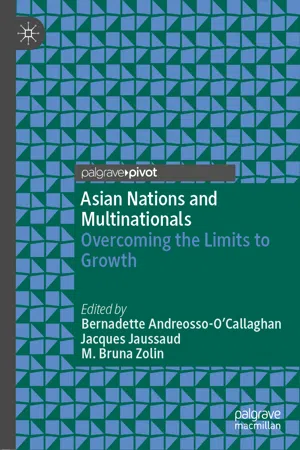In the wake of mediocre or slow growth in Western countries, Asia remains the world’s fastest growing economic region , facilitated in part by inward and outward foreign direct investment (FDI). This is a feature of globalisation , a process made possible by advanced technology which is set to continue, in spite of its desirability being questioned, examples being Britain’s Brexit decision and the accession of Donald Trump to the United States presidency. In contrast, even though President Trump’s November 2017 visit to Asia suggested American re-engagement with the region , Asian nations, especially China, in partial response to the America first policy, have posed as champions of free trade and globalisation .
As a key player China’s domestic policy will increasingly impact upon the economic fortunes of East and Southeast Asian countries, and there is evidence that its one-party state, with continuing governmental control of major industrial sectors, even while giving play to market forces, appears an attractive template for those countries which still retain a semblance of an authoritarian political tradition . At the Nineteenth Chinese Communist Party (CCP) Congress , held in October 2017, Xi Jinping, enshrined his thought in the Party’s constitution and reiterated his vision of a new era of socialism with Chinese characteristics, derived from one-party authoritarianism . In tandem the Chinese official media have decried the weakness and ineffectiveness of Western liberal democracy . In short, the Chinese leaders continue to stake their legitimacy on rising living standards , a sine qua non of which is one-party rule, without which provincial particularism and ethnic diversity, the latter especially in the country’s Western borderlands, would lead to internal dissension. In fact, China’s current political stability and economic success have drawn approval from the Asian leaders, mainly in the context of battles against corruption , notably in the Philippines . As will be discussed later, it can, however, be argued that only countries with representative government providing the prerequisites of free thinking and innovation , can provide the framework for economic progress, the question being whether the Chinese can maintain growth momentum without political liberalisation. Is, for example, CCP control of social media compatible with the internet as a source of innovation and economic growth (Editors, East Asia Forum 2017; US-China Business Council 2017b).
Thus the relevance of a Chinese template will necessarily depend on economic success, the CCP’s objective being to achieve the goal of becoming a moderately well-off society by doubling Gross Domestic Product (GDP) from its 2010 level to a target of per capita US$9000 by 2020. Significantly, however, the per capita target is to address social inequality by taking millions of the population out of poverty (McCahill 2017b). In his work report at the beginning of the CCP Congress Xi Jinping outlined a populist message, implicitly stressing public accountability by strengthening party discipline concerning issues like bribery, integral to the anti-corruption campaign. In Marxist terms, Xi Jinping stated that the greatest contradiction in Chinese society was between unbalanced development and the people’s ever growing expectation of a better living standard .
Thus policies to address these issues included the elimination of poverty , better infrastructure to reduce the urban–rural divide as well as improved education and public health (McCahill 2017a). China’s economic strategy reflects these priorities; as the country enters a new pattern of slower growth but faster structural change , the focus is on increases in productivity rather than accumulation of production factors. In short, the emphasis is on quality rather than quantity, with a stress on capacity reduction in such areas as steel , aluminium and cement . In contrast, a greater role is to be accorded to knowledge -intensive industries and services . Significantly, during President Trump’s visit to China in November 2017, China’s Foreign Ministry stated that, in accordance with the country’s own timetable, barriers to entry by foreign investors to such sectors as banking , insurance and securities securitie would be substantially eased, presumably to gain experience as yet inadequate in China (Cai and Zhang 2017; US-China Business Council 2017c, d).
To further the knowledge economy the Chinese leaders face a number of challenges related to education , healthcare , human resources, labour law and the environment . With the cumulative effects of the now abandoned one-child policy , China now no longer enjoys an excess labour dividend, and employees, whether rural migrants or city dwellers, will need better education and retraining, making it imperative, for instance, that compulsory education be extended from nine to twelve years, thus ensuring better qualified human capital (Cai and Zhang 2017). While an OECF report issued in 2010 noted the strengths of upper secondary vocational education in China, involving a range of specialisms and the commitment to workplace training , it called for closer consultation with employers on skills provision and recommended enhanced fiscal transfers at provincial and county levels (OECD Directorate for Education, Education and Training Policy Division 2010).
Prior to the 1980s, modern healthcare was largely an urban phenomenon in China but the advent of social media has precipitated greater public awareness of provision, especially in view of the adverse effects of environmental degradation on human life. In 2015 the National Planning Comprehensive Blueprint targeted key areas for development, including the reiteration of the importance of multi-institution practice practitioners, a tentative move towards cooperation with the private sec...
